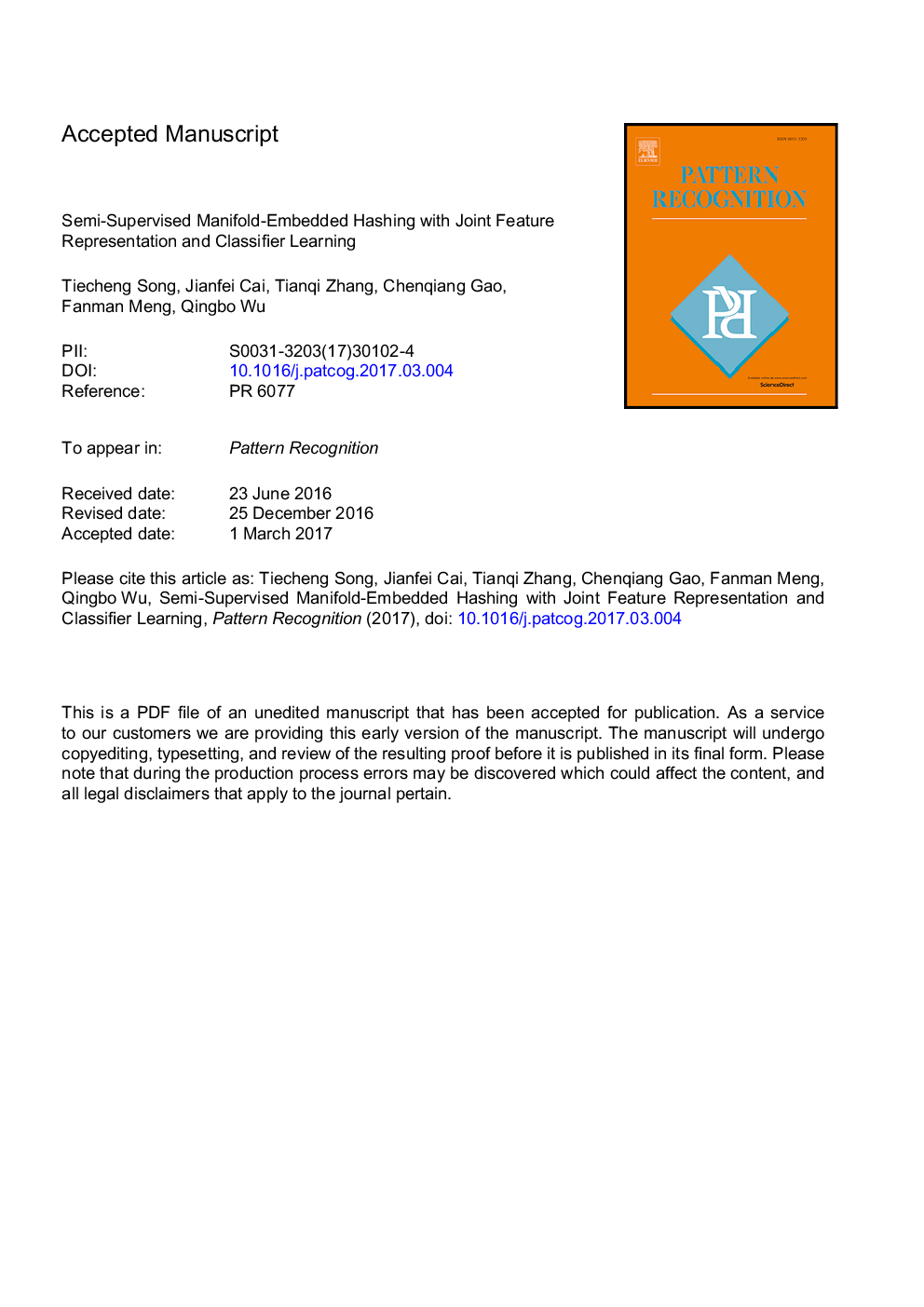| Article ID | Journal | Published Year | Pages | File Type |
|---|---|---|---|---|
| 4969868 | Pattern Recognition | 2017 | 42 Pages |
Abstract
Recently, learning-based hashing methods which are designed to preserve the semantic information, have shown promising results for approximate nearest neighbor (ANN) search problems. However, most of these methods require a large number of labeled data which are difficult to access in many real applications. With very limited labeled data available, in this paper we propose a semi-supervised hashing method by integrating manifold embedding, feature representation and classifier learning into a joint framework. Specifically, a semi-supervised manifold embedding is explored to simultaneously optimize feature representation and classifier learning to make the learned binary codes optimal for classification. A two-stage hashing strategy is proposed to effectively address the corresponding optimization problem. At the first stage, an iterative algorithm is designed to obtain a relaxed solution. At the second stage, the hashing function is refined by introducing an orthogonal transformation to reduce the quantization error. Extensive experiments on three benchmark databases demonstrate the effectiveness of the proposed method in comparison with several state-of-the-art hashing methods.
Related Topics
Physical Sciences and Engineering
Computer Science
Computer Vision and Pattern Recognition
Authors
Tiecheng Song, Jianfei Cai, Tianqi Zhang, Chenqiang Gao, Fanman Meng, Qingbo Wu,
